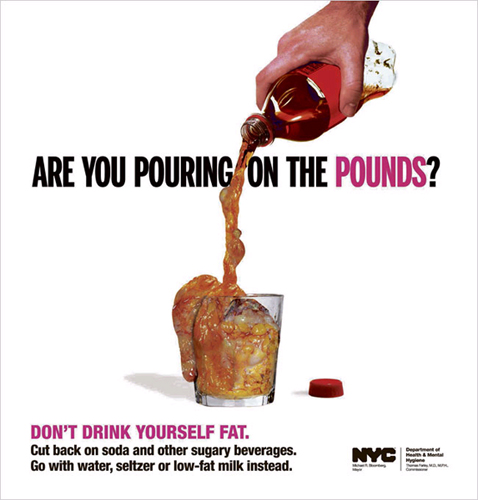Advertising Theory
Advertising has numerous objectives which includes communicating with potential customers as well as pursuading them to adopt a particular product or develop a preference towards the product for repeat purchase which ultimately results in brand loyalty. Advertising Theory therefore tries to explain how and why advertising is effective in influencing behaviors and accomplishing its objectives.
There are numerous theorys within advertising. Most theories suggest that if you want a consumer to like a product or a brand continously then simply expost the consumer to a product or brands advertising such that there are certain feelings and expectations attached towards the rand itself. Advertising theories also make use of content specification, Specific message and media characteristics, consumer characteristics, product/service characteristics, and competitive actions.
Adoption Theory
Adoption theories are aimed at understanding, explaining, or predicting how, why, and to what extent individuals or organizations will adopt or purchase new offerings. According to the adoption theory, there are multiple factors involved in influencing product or service adoption by an individual or organization and theories of adoption recognize all these factors.
Adaption Level Theory
Put forth in pioneering research by Helson (1947).
A theory positing that an individual’s reference point for subjective judgments regarding particular classes of stimuli is determined by the individual’s prior exposure to such stimuli as well as recollections of past judgments of similar stimuli.
http://www.marketing91.com/advertising-theory/
Shannon Smith
MS3: Research Investigation
Thursday, 23 June 2011
The Arousal Theory
The Arousal Theory
A theory put forth by researcher Donald Lindsley in the 1951, and expanded upon by researcher Ellis Lee in 1996.
It states that every person has an an “optimal level” of arousal from his or her environment, with too little stimulation causing boredom and too much stimulation causing anxiety. The threshold for arousal increases with experience, so more exciting experiences are needed to stay at the optimal level. Advertisers must continually push the envelope to hold our attention through marketing campaigns.
http://www.castaffair.com/blog/?p=250
A theory put forth by researcher Donald Lindsley in the 1951, and expanded upon by researcher Ellis Lee in 1996.
It states that every person has an an “optimal level” of arousal from his or her environment, with too little stimulation causing boredom and too much stimulation causing anxiety. The threshold for arousal increases with experience, so more exciting experiences are needed to stay at the optimal level. Advertisers must continually push the envelope to hold our attention through marketing campaigns.
http://www.castaffair.com/blog/?p=250
Theory of Selective Perception
Selective Perception
Selective perception is the process by which individual selects, organizes and evaluates stimuli from the environment to provide meaningful experiences for him- or herself. This means that people focus in certain features of their environment to the exclusion of others. The consumer automatically chooses which information to notice and this kind of selection is dependent of different perceptual filters which are based on the consumer's earlier experiences.
Long term branding issues should also be considered if using shock advertising as a communication method. Using shocking pictures could affect the way consumers perceive your brand and quality of your product. The ethics is always important to have in mind, and using fear or other strong messages might not always be the best and most effective method to use.
http://en.wikipedia.org/wiki/Shock_advertising
Selective perception is the process by which individual selects, organizes and evaluates stimuli from the environment to provide meaningful experiences for him- or herself. This means that people focus in certain features of their environment to the exclusion of others. The consumer automatically chooses which information to notice and this kind of selection is dependent of different perceptual filters which are based on the consumer's earlier experiences.
Long term branding issues should also be considered if using shock advertising as a communication method. Using shocking pictures could affect the way consumers perceive your brand and quality of your product. The ethics is always important to have in mind, and using fear or other strong messages might not always be the best and most effective method to use.
http://en.wikipedia.org/wiki/Shock_advertising
Monday, 20 June 2011
Shock Advertising Articles
Shock Advertising Articles
A glass of thick, yellow human fat, marbled with blood vessels, is the latest weapon in America's war on obesity.
America has a serious soda habit: residents drink 15 billion gallons of the fizzy stuff each year.
" Showing people a gruesome image and saying, 'look, this is what you're doing to your body' makes people think "
Jonathan Alpert
Psychotherapist
Psychotherapist
A hard-hitting TV commercial for children's charity Barnardo's will continue to be screened, despite attracting almost 500 complaints.
Barnardo's said the advert highlighted the "vicious cycle" of abuse and crime.
Top 10 Controversial Adverts
A record number of adverts were complained about in 2006, the Advertising Standards Authority has said. The subjects which annoyed people, including the portrayal of same-sex kisses, religion and knives, reveals something of modern day concerns.
Top 10 Controversial Adverts
A record number of adverts were complained about in 2006, the Advertising Standards Authority has said. The subjects which annoyed people, including the portrayal of same-sex kisses, religion and knives, reveals something of modern day concerns.
Shocking Moving Image Adverts
Shocking Moving Image Adverts
Parents Influence on their Children.
"Children See, Children Do"
Shock Print Advertising
Shock advertising is a method of advertising that purposely offends and startles its viewers in an attempt to gain attention, encourage cognitive processing, and have an immediate impact on behavior. Ads containing disgusting images, sexual references, profanity and obscenity, religious taboos, vulgarity, impropriety or moral offensiveness are considered to be “shocking”. It has been used for many years around the world, but has recently been questioned as to whether or not it is still a productive method of advertising.
Shock avertising is a very controversial technique used in the field, with many critics claiming it to be an immoral and low route to take in getting a brand, idea, or issue noticed. The “shock” tactic, whether seen as immoral or not, has been proven over the years to be an effective way of gaining an audience’s attention. Unfortunately, as times have changed and people have been exposed more and more to norm violating material, advertisers must face the decision whether to keep trying to “shock” their target market, or to ditch the method completely.
Shock avertising is a very controversial technique used in the field, with many critics claiming it to be an immoral and low route to take in getting a brand, idea, or issue noticed. The “shock” tactic, whether seen as immoral or not, has been proven over the years to be an effective way of gaining an audience’s attention. Unfortunately, as times have changed and people have been exposed more and more to norm violating material, advertisers must face the decision whether to keep trying to “shock” their target market, or to ditch the method completely.
An Investigation into the Conventions of Cause Awareness Campaigns.
Plan
Introduction
-What I am actually doing
-Cause Awareness.
-Principle of Shock Advertising. Audience Become Desensitised?
Theories
- Advertising Theory what?
- Theory of Selective Perception who?
- The Arousal Theory when?
- Adaption Theory
- Adaption Level Theory
Paragraph 1
NSPCC what? who? when? achievments? complaints?
- Adverts & Articles.
Paragraph 2
Cancer Research what? who? when? achievments? complaints?
- Adverts & Articles
Paragraph 3
Barnardos what? who? when? achievments? complaints?
- Adverts & Articles
Paragraph 4
Shock Advertising
- Adverts & Articles.
-Images
-Complaints
-About the ASA.
Conclusion
Introduction
-What I am actually doing
-Cause Awareness.
-Principle of Shock Advertising. Audience Become Desensitised?
Theories
- Advertising Theory what?
- Theory of Selective Perception who?
- The Arousal Theory when?
- Adaption Theory
- Adaption Level Theory
Paragraph 1
NSPCC what? who? when? achievments? complaints?
- Adverts & Articles.
Paragraph 2
Cancer Research what? who? when? achievments? complaints?
- Adverts & Articles
Paragraph 3
Barnardos what? who? when? achievments? complaints?
- Adverts & Articles
Paragraph 4
Shock Advertising
- Adverts & Articles.
-Images
-Complaints
-About the ASA.
Conclusion
Subscribe to:
Posts (Atom)











